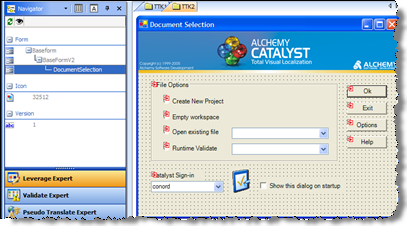|
|
Visual Inheritance |
|
|
Visual Inheritance |
Alchemy CATALYST supports visual inheritance as implemented within the Microsoft .NET Framework Version 2.0 and above. This allows developers of .NET applications to reuse winforms or controls, previously defined in an application, to make up new ‘inherited’ winforms or controls.
|
|
In this example, the winform in the left-most column is made up of two other inherited winforms shown adjacent to it. |
This can lead to dependencies within your .NET application and other external files such as 3rd party controls. When Catalyst is parsing .NET binary files, other assembly files that are referenced within that binary file may be needed to complete the parsing process successfully.
In the case of inherited winforms and user controls that exist in external assemblies, Alchemy CATALYST uses the .NET Framework to resolve the vast majority of these dependencies and references. This information is stored in the Global Assembly Cache (GAC). Using this information Alchemy CATALYST can locate and load these external assemblies as appropriate. See Customising .NET Component for more information.
Use the Inheritance View in the Project Navigator to view the relationships between inherited objects. For more information on this please refer to Overview: Dialog Editor.

In the example above, the Project Navigator displays an inheritance tree for the winform in the Dialog Editor. This is a hierarchical list of sub-forms which are combined together using visual inheritance to make this final form.